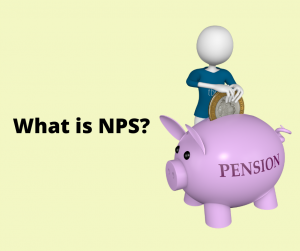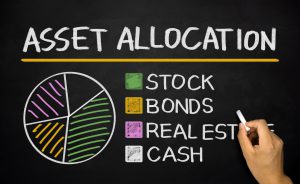
A Government-backed scheme that allows its investors to invest their money in various market-linked instruments like equities and debt; the final pension amount will be the outcome of returns from these investments. There is 75% to 50% equity exposure that stabilizes the
risk-return proportion for the investors under the scheme of the NationalPension Scheme. Pension Fund Regulatory and Development Authority of India (PFRDA) regulates the NPS. It is open to all individuals between the ages of 18 and 60 or maximum to the age of 70. Partial amounts (up to 25%) from the NPS can be withdrawn by the individual after 3 years of opening the account.
How to invest in NPS?
Getting started
First of all, a person has to get registered with the NPS. You can get an application form from a Point of Presence-Service Provider (POPSP) or if you wish you can download it from the National Securities Depository Limited website (npscra.nsdl.co.in). Submit the filled form at any nodal office of any POP-SP.
Documents needed NPS
Photocopies of proof of identity and residence (passport, Aadhar card, ration card, voter ID, driving license, utility bills, etc.) will be required along with the application form. But, don’t forget to carry the original document for verification by the POP-SP.
Apply online
Apply online if your mobile number is linked to your Aadhar card. For this, you need to log on to the NSDL website (enps.nsdl.com), enter in your Aadhar number. After this, you will receive a one-time password (OTP) on your registered mobile number. Enter that then automatically all the necessary information will be filled up in the online form. If you don’t have AADHAR then you must upload a scanned signature and a photograph.
a) Initial contribution
After filling the necessary information, you will be routed to a payment gateway. You can even make the payment of a small amount as Rs 500 for your initial contribution. You can perform the payment using debit or credit card or Internet banking.
b) PRAN card
A Permanent Retirement Account Number (PRAN) will be allotted to you after you make payment. In a few days, you will receive a PRAN card, IPIN, TPIN, and scheme details from PFRDA.
c) Submitting form offline
Printout of the filled form along with a pasted photo and signature has to be sent to the Central Recordkeeping Agency at Central Recordkeeping Agency (eNPS) NSDL.
Choosing a pension fund
Mention the pension fund you want to invest in the form filled. Seven pension funds options are available to investors in the general category. It has to be noted that an investor can switch to another pension fund only once in a year. You need to be careful about it. Choose for a fund house that has consistently done well in the asset class you want to invest in.
Asset mix NPS

There will be a requirement to mention the asset mix for your investments. There are three classes of funds.
a) E class
Equity funds come under this class that invests in stocks. Till now, pension fund managers were allowed to invest in Nifty shares only that too in the same proportion as their weightage in the index. But, at present, the PFRDA allows the fund managers to invest in shares that are in the Future and Option segment.
b) C class
Corporate debt funds come under this class that invests in bonds issued by companies. But, PFRDA keeps a very strict watch on the quality of the holdings. It has been seen that some fund managers in the past invested in low-rated bonds to earn higher returns. But this can be risky and PFRDA has fined funds that have followed such practices.
c) G class
Gilt funds come under this class that invests in government securities. These schemes invest in government securities; hence they have zero default risk. However, the high-interest rate risk factor is present.
Auto choice NPS
This option is suitable for all those investors who are unsure about the asset mix. The age of the investor acts as a major defining factor. Till the time the investor turns 35-year-old, 50% of his/her corpus will be in the equity funds and the rest in corporate debt and gilts.
Every year, 2% of the assets in the equity fund and 1% of the assets in corporate bonds will be shifted to the gilt fund. In five years, by the time the investor attains 40, the equity exposure of his NPS corpus would be down to 40%. By the time of 55-years-old age, the investor would have only 10% in equities, 10% in bonds, and 80% in gilts.
For more updated information related to Investment related solutions. listen to the podcasts- ‘Paisa Vaisa’ Paisa Vaisa (Hindi) in Hindi | हिन्दी मे | KUKUFM, Money with Monika https://kukufm.com/show/money-with-monika-1, totally dedicated podcasts about investments.



0 Comments